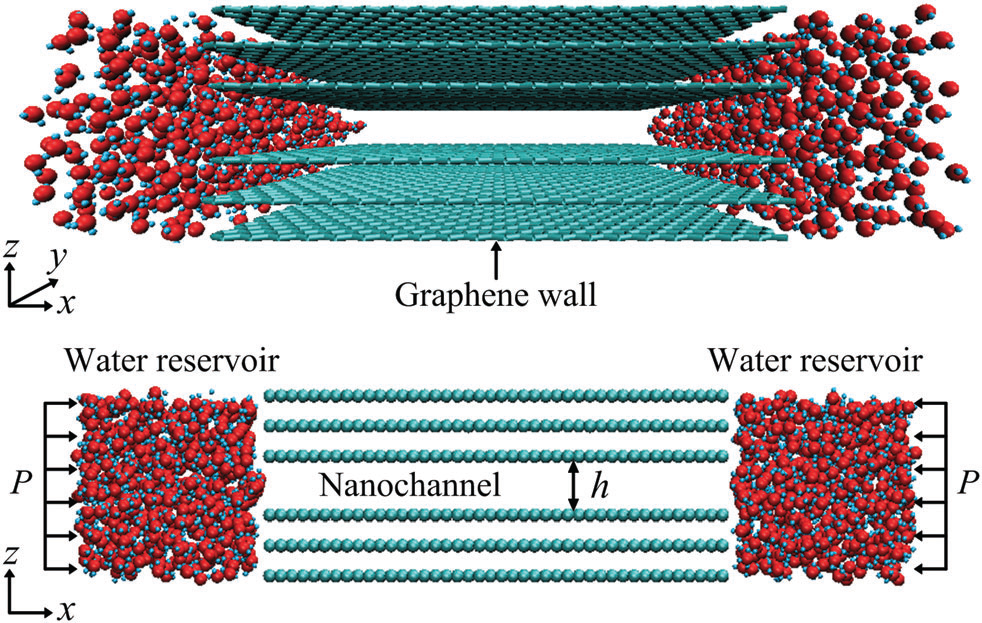论文2017阅读次数 [418] 发布时间 :2017-06-27 10:51:46
=2017=
3.Physical mechanism of surface roughening on the radial core-shell nanowire heterostructure with alloy shell
AIP Advances 7 (2017), 055006(PDF-File)
Yuanyuan Cao and Dongfeng Diao
We proposed a quantitative thermodynamic theory to address the physical process of surface roughening during the epitaxial growth of core-shellNWwith alloy layer. The surface roughening origins from the transformation of the Frank-van der Merwe (FM) mode to the Stranski-Krastanow (SK) mode. In addition to the radius of NW core, the composition and thickness of alloy shell could determine the growth behaviors due to their modulation to the strain. The established theoretical model not only explains the surface roughening caused by the alloy shell layer, but also provides a new way to control the growth of core-shell NW.
growth of core-shellNWwith alloy layer. The surface roughening origins from the transformation of the Frank-van der Merwe (FM) mode to the Stranski-Krastanow (SK) mode. In addition to the radius of NW core, the composition and thickness of alloy shell could determine the growth behaviors due to their modulation to the strain. The established theoretical model not only explains the surface roughening caused by the alloy shell layer, but also provides a new way to control the growth of core-shell NW.
2.Structure and dynamics of water confined in a graphene nanochannel under gigapascal high pressure: dependence of friction on pressure and confinement
Physical Chemistry Chemical Physics 19(2017) , 14048 - 14054(PDF-File)
Lei Yang, Yanjie Guo and Dongfeng Diao
Recently, water flow confined in nanochannels has become an interesting topic due to its unique properties and potential applications in nanofluidic devices. The trapped water is predicted to experience high pressure in the gigapascal regime. Theoretical and experimental studies have reported various novel structures of the confined water under high pressure. However, the role of this high pressure on the dynamic properties of water has not been elucidated to date. In the present study, the structure evolution and interfacial friction behavior of water constrained in a graphene nanochannel were investigated via molecular dynamics simulations. Transitions of the confined water to different ice phases at room temperature were observed in the presence of lateral pressure at the gigapascal level. The friction coefficient at the water/graphene interface was found to be dependent on the lateral pressure and nanochannel height. Further theoretical analyses indicate that the pressure dependence of friction is related to the pressure-induced change in the structure of water and the confinement dependence results from the variation in the water/graphene interaction energy barrier. These findings provide a basic understanding of the dynamics of the nanoconfined water, which is crucial in both fundamental and applied science.
applications in nanofluidic devices. The trapped water is predicted to experience high pressure in the gigapascal regime. Theoretical and experimental studies have reported various novel structures of the confined water under high pressure. However, the role of this high pressure on the dynamic properties of water has not been elucidated to date. In the present study, the structure evolution and interfacial friction behavior of water constrained in a graphene nanochannel were investigated via molecular dynamics simulations. Transitions of the confined water to different ice phases at room temperature were observed in the presence of lateral pressure at the gigapascal level. The friction coefficient at the water/graphene interface was found to be dependent on the lateral pressure and nanochannel height. Further theoretical analyses indicate that the pressure dependence of friction is related to the pressure-induced change in the structure of water and the confinement dependence results from the variation in the water/graphene interaction energy barrier. These findings provide a basic understanding of the dynamics of the nanoconfined water, which is crucial in both fundamental and applied science.
1.Self-magnetism induced large magnetoresistance at room temperature
CARBON 112(2017), 162–168
Chao Wang and Dongfeng Diao*
We report large positive magnetoresistance (MR) of over 12% at 273 K in graphene nanocrystallited pure carbon
 film. MR behaviors at different temperatures implied that low temperature MR was from carrier diffusive scattering and room temperature MR was from spin arrangement effect. Temperature dependences of the film resistance and magnetization recognized that as temperature decreased from 300 to 200 K, transitions occurred on the electrical transporting process from conductive mode to semi-conductive mode, and the nanocrystallited structure showed competition of ferromagnetic and antiferromagnetic interactions. The large room temperature MR was ascribed to the ferromagnetic order of spin magnetic moment arrangement at the of graphene layer edges.
film. MR behaviors at different temperatures implied that low temperature MR was from carrier diffusive scattering and room temperature MR was from spin arrangement effect. Temperature dependences of the film resistance and magnetization recognized that as temperature decreased from 300 to 200 K, transitions occurred on the electrical transporting process from conductive mode to semi-conductive mode, and the nanocrystallited structure showed competition of ferromagnetic and antiferromagnetic interactions. The large room temperature MR was ascribed to the ferromagnetic order of spin magnetic moment arrangement at the of graphene layer edges.
